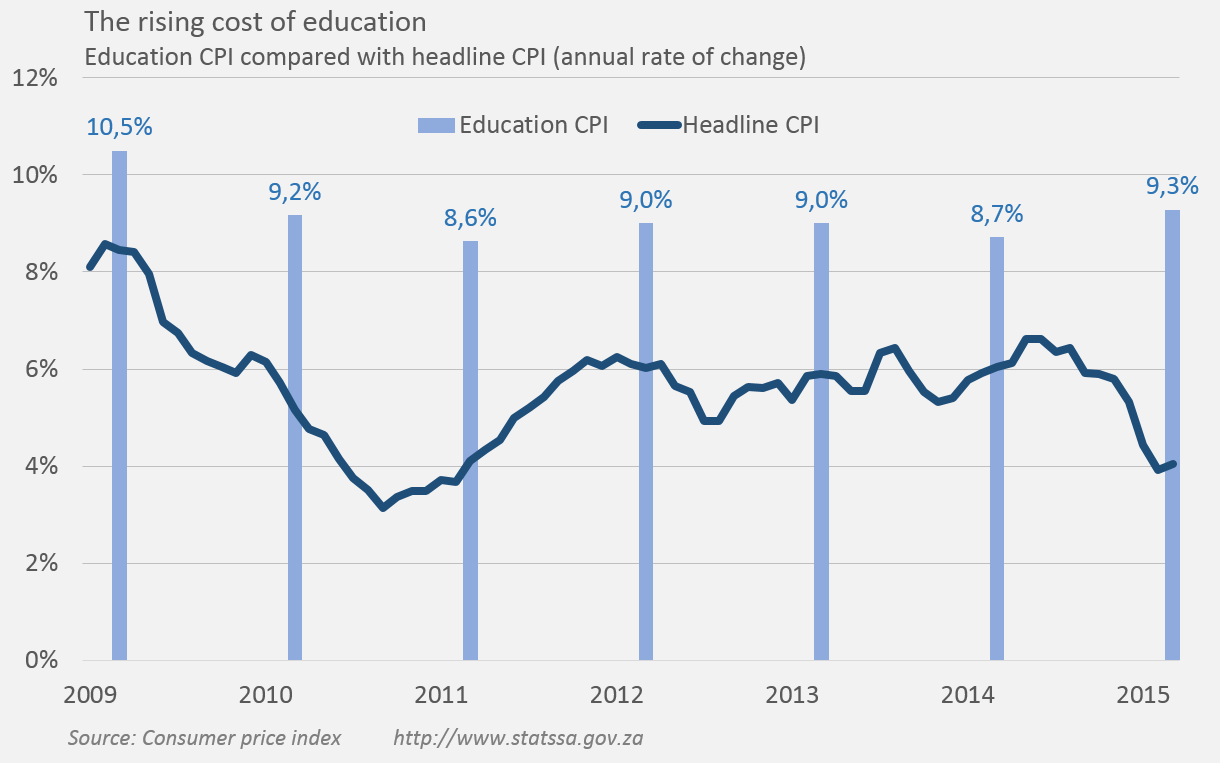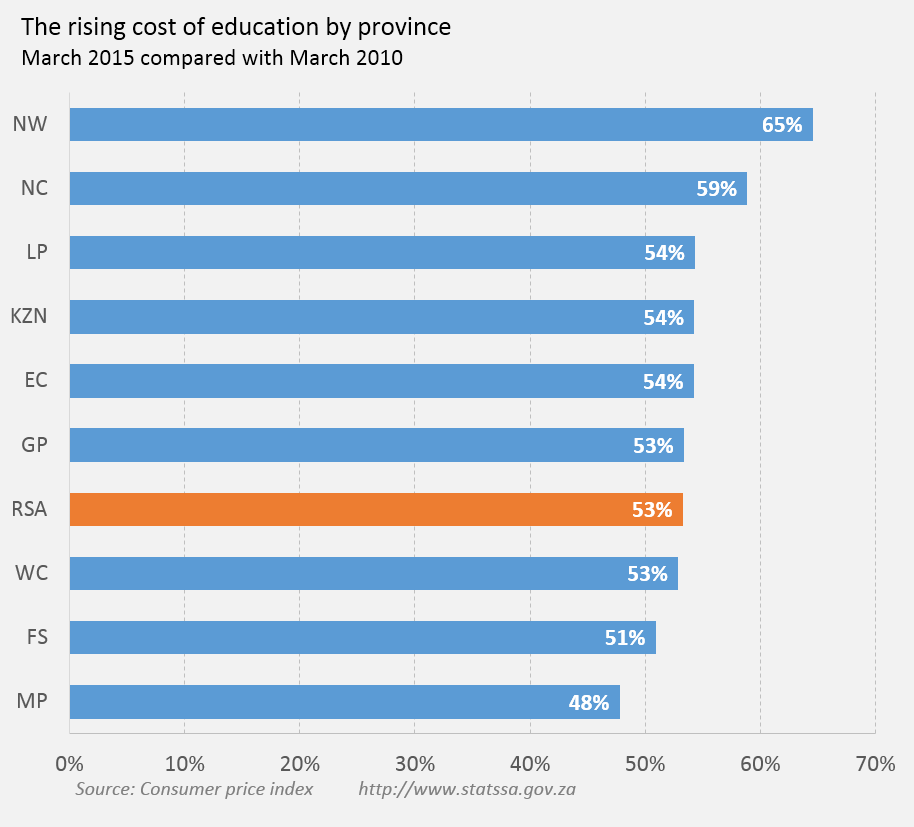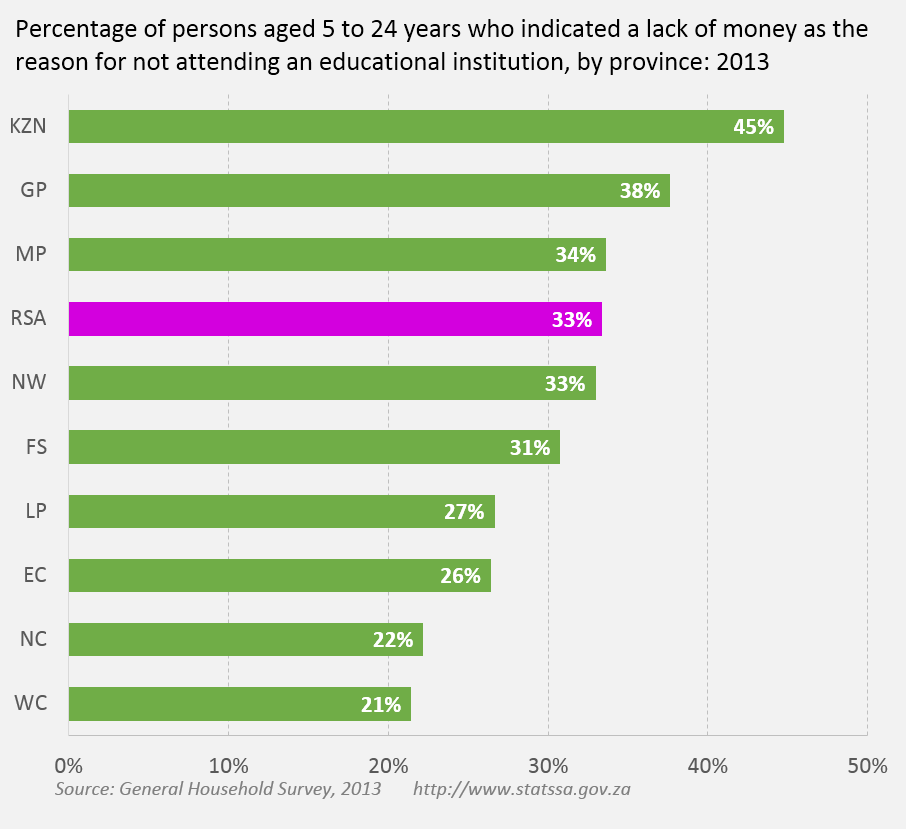
Education costs continue to outstrip inflation
It is often said that an investment in knowledge pays the best interest. A good education is worth its weight in gold, but recent figures released by Stats SA indicate that South African households will have to make more room in their budgets to pay for rising tuition fees.
Stats SA updates education inflation figures every March, based on fees charged by schools and tertiary institutions. The most recent update, included in the latest Consumer price index release1, shows that the cost of education rose by 9,3% in March 2015 compared with March 2014. This is 5,3% percentage points higher than the headline CPI of 4,0%. The chart below shows how education inflation has constantly outstripped general inflation.
South African families are bound to feel the pinch. Old Mutual estimates that if a child starts Grade R this year, a complete education – including primary school, high school and three years of university – will cost just under R1 million for public school tuition, or R2,2 million for private school tuition (in nominal terms)2.
A provincial breakdown shows where tuition fees have risen sharply. The cost of education rose nationally by 53% in March 2015 compared with March 2010. In other words, for every R100 a household spent on education in 2010, a household would now have to fork out R153 for the same service. North West and Northern Cape showed the largest increases, 65% and 59% respectively.
Rising education costs present a barrier for those seeking an education. Stats SA’s latest General Household Survey reports that 33% of individuals aged 5–24 indicated that a lack of money was the reason they were not attending an educational institution3. Broken down by province, the figure is as high as 45% in KwaZulu-Natal, and as low as 21% in Western Cape. Interestingly, although Northern Cape exhibited a 59% increase in education costs between 2010 and 2015, only 22% of those aged 5–24 indicated a lack of money as a barrier to education.
But what is causing the increase in education costs? A University World News article, focussing on higher education, attributes rising costs to a number of factors4. Higher education institutions raise their fees on the back of rising maintenance costs, more expensive municipal services, and higher enrolment rates. The rand-dollar exchange rate has also increased the cost of imported books and materials.
Stats SA’s report on the financial status of higher education institutions shows that total expenses increased by 12% in 2013 compared to 2012, rising from R41,4 billion to R46,2 billion5. This rise in spending by higher education institutions was mainly driven by increases in the purchases of goods and services (up by 13%) and compensation of employees (up by 10%). Compensation of employees contributed 55% (R25,6 billion) to higher education spending in 2013, followed by purchases of goods and services at 39% (R17,8 billion).
1Download the Consumer price index publication here.
3Sourced from the General Household Survey, 2013 dataset on Nesstar. Click here.
4Higher education is not cheap.
5Download the Financial statistics of higher education institutions publication here.
Photo: Hannelie Coetzee, http://www.mediaclubsouthafrica.com




